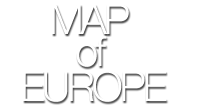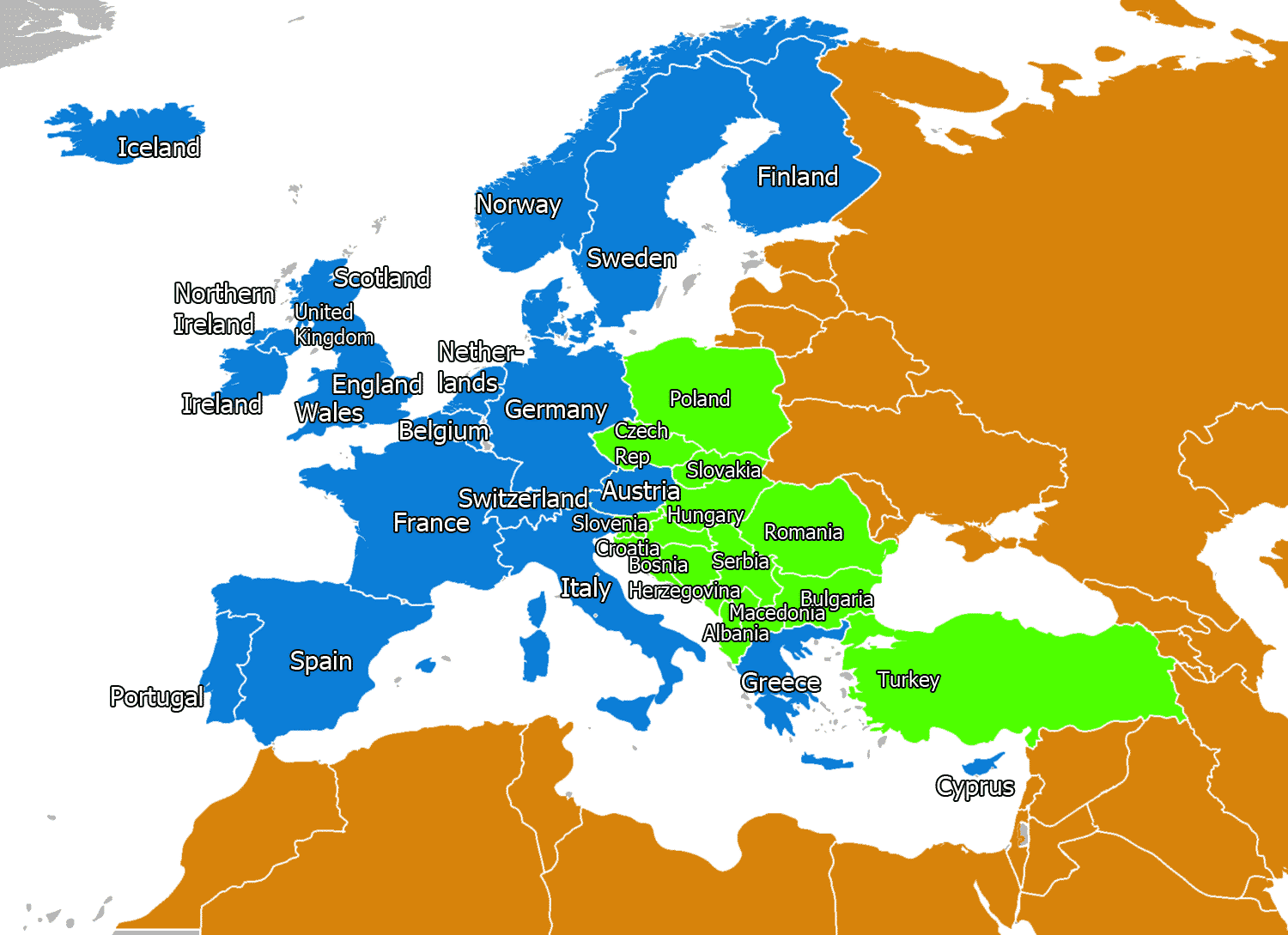Western Europe, a region rich in history and culture, is a fascinating area to explore. This article will delve into the intricacies of the map of Western Europe, providing insights into its geographical composition, the countries it encompasses, and some intriguing facts about the region.
What Countries are in the Western Side of Europe?
Western Europe is home to a diverse range of countries, each with its unique characteristics and charm. The region comprises 29 countries, including Andorra, Austria, Belgium, Denmark, Faroe Islands, France, Germany, Gibraltar, Greece, Guernsey, Iceland, Ireland, Isle of Man, Italy, Jersey, Liechtenstein, Luxembourg, Malta, Monaco, Netherlands, and others.
The Intricacies of Western Europe’s Geography
Western Europe covers a total area of approximately 1.328 million square miles, making it a vast and diverse region. The largest country in terms of land area is France, spanning 212,935 square miles, while the smallest is Vatican City, covering a mere 0.17 square miles.
Norway and Switzerland: The EU Outsiders
Norway and Switzerland are two prominent countries in Western Europe that are not part of the European Union (EU). The reasons for their non-membership are complex and multifaceted, rooted in historical, economic, and political factors.
For Norway, the decision to stay out of the EU has been influenced by a desire to maintain control over its natural resources, particularly its rich oil reserves. The country has opted instead for a European Economic Area (EEA) agreement, which allows it to access the EU’s single market without being a full member.
Switzerland, on the other hand, has maintained its independence and neutrality over centuries, which has influenced its decision not to join the EU. The Swiss have preferred to negotiate bilateral agreements with the EU to secure their economic interests while preserving their sovereignty.
The Seven Regions of Europe
Europe is often divided into seven regions for geographical and political analysis. These regions are Northern Europe, Western Europe, Eastern Europe, Southern Europe, Central Europe, the Baltic States, and the British Isles. Each region has its unique characteristics, culture, and history.
England and Western Europe
England, part of the United Kingdom, is indeed considered a part of Western Europe. This classification is based on geographical location, historical ties, and cultural similarities with other Western European countries.
Why is it Called Western Europe?
The term “Western Europe” is rooted in the context of the Cold War. During this period, Europe was divided into the Western Bloc, which included countries aligned with NATO, and the Eastern Bloc, which comprised nations within the Soviet sphere of influence. The term has since evolved and is now used more in a geographical context to distinguish the region from Eastern, Central, and Southern Europe.
The European Union and Western Europe: An Inextricable Bond
The European Union (EU) is a political and economic union that plays a significant role in shaping the landscape of Western Europe. Comprising 27 member states, the EU has its roots in Western Europe, with countries like France, Germany, Italy, Belgium, Luxembourg, and the Netherlands being among its founding members.
The EU has been instrumental in fostering cooperation and integration among its member states, promoting peace, stability, and economic prosperity in the region. It has established a single market that allows for the free movement of goods, services, capital, and people among member states. This has facilitated trade and investment, contributing to the economic growth and development of Western Europe.
Moreover, the EU has also been a driving force behind the harmonization of laws and regulations among member states in areas such as human rights, consumer protection, and environmental conservation. This has led to the creation of a shared legal and regulatory framework that has helped to ensure a level playing field and promote social justice across the region.
However, the relationship between the EU and Western Europe is not without its complexities. Not all countries in Western Europe are members of the EU. Notably, Norway and Switzerland have chosen to remain outside the EU while still maintaining close economic and political ties with the union through various agreements.
Furthermore, the recent departure of the United Kingdom from the EU, commonly known as Brexit, has added a new dimension to the relationship between the EU and Western Europe. Despite this, the EU continues to play a pivotal role in shaping the political, economic, and social landscape of Western Europe.
Additional Facts
Did you know that Western Europe has a total population of approximately 418 million people? Germany has the highest population, with an estimated 83.4 million people, while Vatican City has the lowest, with just 515 people. The region’s GDP totals $19.35 trillion per year, with Germany having the highest GDP at $4.223 trillion per year. These facts and more make Western Europe a region of significant economic and demographic importance on the global stage.
This article has provided a detailed overview of the map of Western Europe, covering its geographical composition, the countries it encompasses, and some intriguing facts about the region. Whether you’re a geography enthusiast or a curious traveler, Western Europe is a region that promises endless exploration and discovery.
The map of Western Europe is a tapestry of diverse countries, cultures, and histories. From the fjords of Norway to the vineyards of France, each country in this region offers a unique blend of experiences. Whether you’re a geography enthusiast, a history buff, or a curious traveler, Western Europe is a region that promises endless exploration and discovery.
Here we have a new map of Eastern Europe

